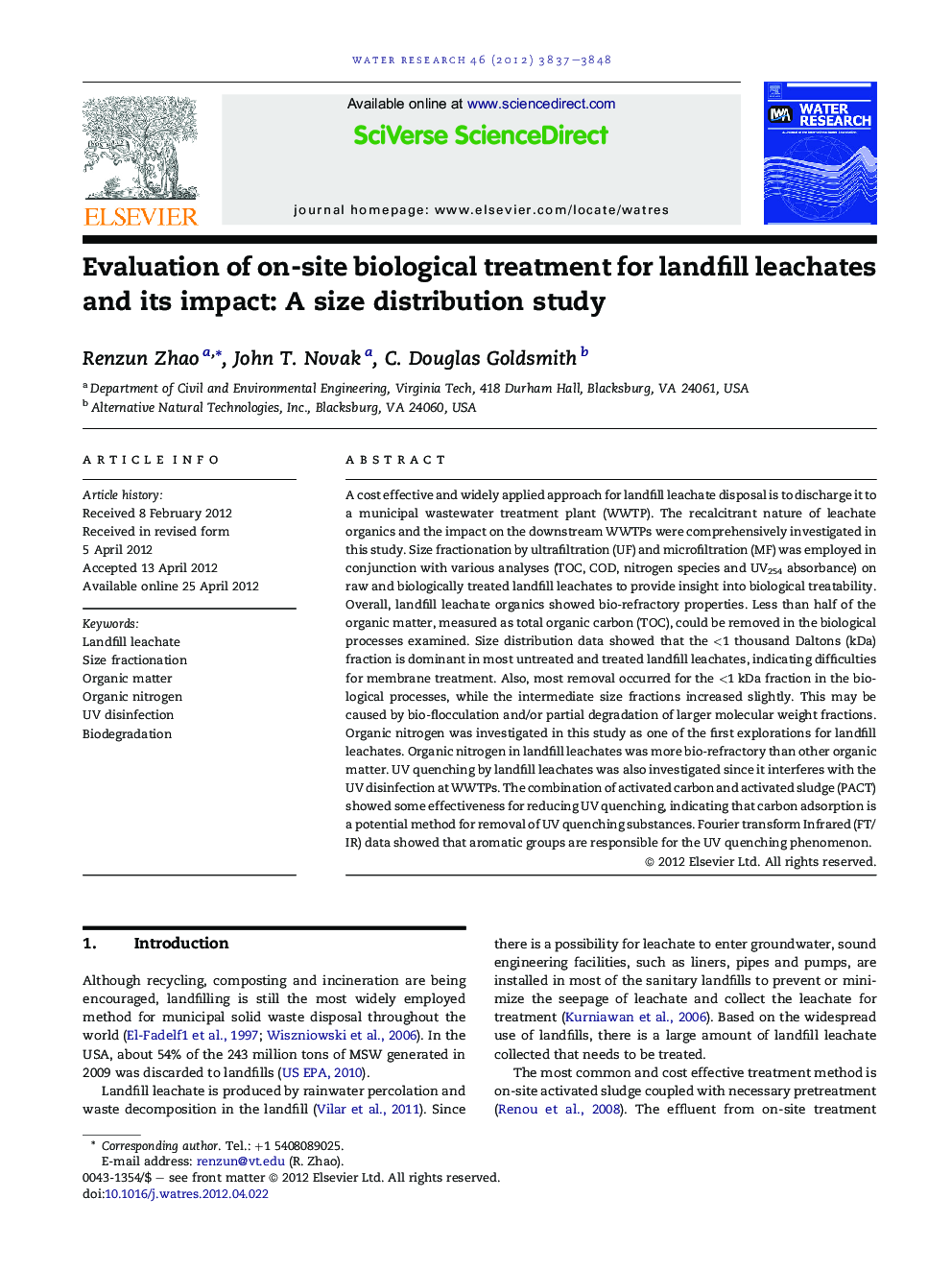| کد مقاله | کد نشریه | سال انتشار | مقاله انگلیسی | نسخه تمام متن |
|---|---|---|---|---|
| 4483117 | 1316878 | 2012 | 12 صفحه PDF | دانلود رایگان |

A cost effective and widely applied approach for landfill leachate disposal is to discharge it to a municipal wastewater treatment plant (WWTP). The recalcitrant nature of leachate organics and the impact on the downstream WWTPs were comprehensively investigated in this study. Size fractionation by ultrafiltration (UF) and microfiltration (MF) was employed in conjunction with various analyses (TOC, COD, nitrogen species and UV254 absorbance) on raw and biologically treated landfill leachates to provide insight into biological treatability. Overall, landfill leachate organics showed bio-refractory properties. Less than half of the organic matter, measured as total organic carbon (TOC), could be removed in the biological processes examined. Size distribution data showed that the <1 thousand Daltons (kDa) fraction is dominant in most untreated and treated landfill leachates, indicating difficulties for membrane treatment. Also, most removal occurred for the <1 kDa fraction in the biological processes, while the intermediate size fractions increased slightly. This may be caused by bio-flocculation and/or partial degradation of larger molecular weight fractions. Organic nitrogen was investigated in this study as one of the first explorations for landfill leachates. Organic nitrogen in landfill leachates was more bio-refractory than other organic matter. UV quenching by landfill leachates was also investigated since it interferes with the UV disinfection at WWTPs. The combination of activated carbon and activated sludge (PACT) showed some effectiveness for reducing UV quenching, indicating that carbon adsorption is a potential method for removal of UV quenching substances. Fourier transform Infrared (FT/IR) data showed that aromatic groups are responsible for the UV quenching phenomenon.
Figure optionsDownload high-quality image (147 K)Download as PowerPoint slideHighlights
► Organic matter in landfill leachates is bio-refractory.
► Less than 1 K Dalton fractions are dominant in raw and biologically treated leachates.
► Landfill leachates may impact the nitrogen removal and UV disinfection in the WWTPs.
► Organic nitrogen in landfill leachates is more refractory than other organic matter.
► PAC may enhance treatment performance of UV quenching substances.
Journal: Water Research - Volume 46, Issue 12, August 2012, Pages 3837–3848